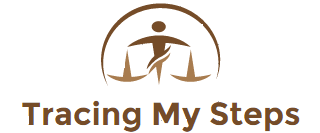Ballroom Dancing – The Paso Doble
The Paso Doble, originally a Spanish folkdance, has the distinction of being one of the only ballroom dances that is only danced in the ballroom world. You will find people in clubs doing the Waltz, or the Tango or the Quick Action however you won’t see them carrying out a Paso Doble.
Although bullfights can be traced all the method back to ancient Greece they weren’t a part of the culture of Spain until the 1700’s. The enjoyment and tension of the bullfight, the pride and self-respect of the matador in addition to the style of his cape are all portrayed in the Paso Doble. Paso Doble is Spanish for “Two Action” which is a reference to the marching design of this dance with its 1-2 count.
For the ballroom competitors the Paso Doble is finished with chest high, shoulders broad and down, head back however slightly tipped down. The body leans a little forward and the majority of the forward steps are finished with the heel leading. The dance is further boosted with strong actions and remarkable postures. The Paso Doble is one of the most significant of all the ballroom dances.
The Paso Doble is among the few dances that is for the man. The female’s part in this dance is strictly a supporting one. Depending on their interpretation she might take the part of the matador’s cape, or the bull, or sometimes even the matador at various times throughout the dance.
Some distinctive steps of the Paso Doble are the chassez cape (where the man uses the woman as the cape), the Apel, where the guy stamps his foot as if to attract the attention of the bull (a very strong move) and the Arpel which is a movement that starts with marking of the feet then the couples walk in opposite instructions.
Ballroom Dancing – The Cha-Cha
The London dance teacher Pierre Lavelle, who was accountable for having the Cuban Rumba stated the official Rumba, while on a visit to Cuba, had seen that often there were extra beats added to the Rumba. Upon his go back to England he taught these steps as a totally new dance. It has actually been suggested that the name Cha-Cha (or Cha-Cha-Cha as it is called by some people) was created for the sound of the 3 quick steps after the forward and back action (or back and forward actions). The steps for the Cha-Cha are handled the beats accompanied by a strong hip movement as the leg straightens on the half beat.
The Cha-Cha is an enjoyable, flirty, lighthearted dance that gets its distinct “cha, cha, cha” rhythm due to the fact that there are 5 tap dance to 4 beats. Dancers work parallel with each other in well synchronized movements sometimes utilizing the “New Yorker”, an action where among the dancers steps throughout the other and checks to change direction. Cuban motion, the hip movement derived from at the same time flexing and aligning the knees, is a crucial factor in this dance.
